#tube tremolo
Explore tagged Tumblr posts
Text

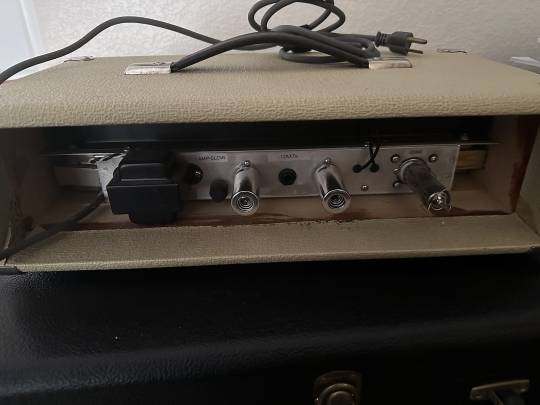


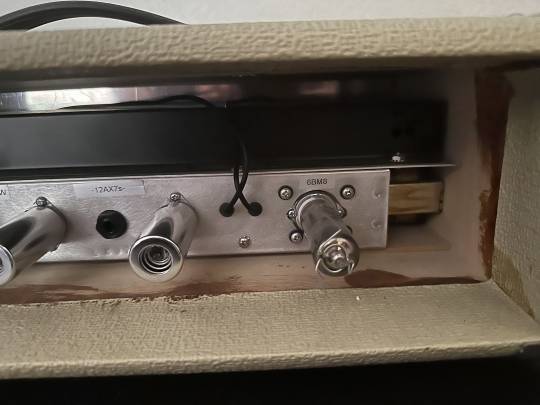
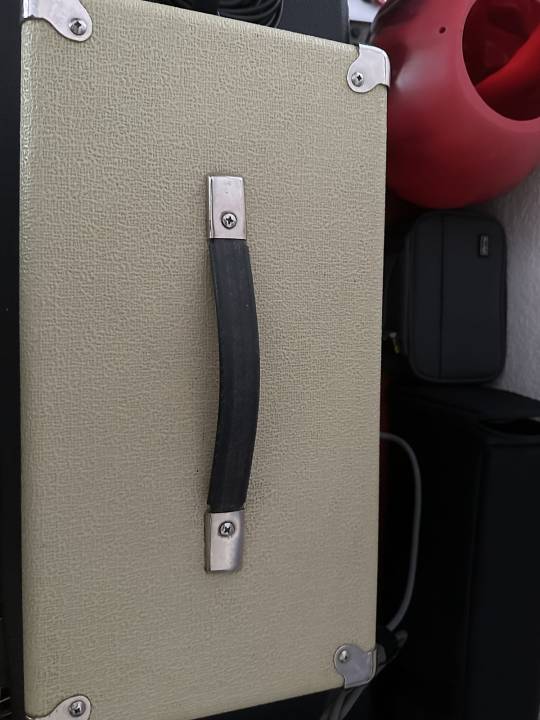

Billy Zoom - Little Kahuna reverb unit
"Somewhat based on the vintage Fender Reverb tank but with added tube tremolo."
cred: reverb.com/Phil's Stuff
#billy zoom#little kahuna#desktop unit#tube reverb#tube tremolo#spring reverb#tube spring reverb#reverb
27 notes
·
View notes
Text
NAMM 2024: Gibson Falcon Amps - A Blend of Vintage Charm and Modern Innovation
Gibson Falcon Amps, we told you they were coming last week. In a thrilling announcement ahead of NAMM 2024, Gibson has unveiled its revamped line of guitar amplifiers, introducing the Falcon 5 and Falcon 20. These tube amp combos, born from a collaboration with the legendary Randall Smith and his Mesa/Boogie team, are a modern nod to the iconic ‘60s Gibson designs. Compact Power, Rich Tone:…

View On WordPress
#6L6#amplification#amps#Baltic birch#California#cream bronco#Falcon 20#Falcon 5#Gibson#Gibson Amplification#Gibson Falcon 5#Gibson Falcon Amps#Jenson#Mesa Boogie#NAMM#NAMM 2024#Petaluma#Tremolo#tube#video#YouTube
2 notes
·
View notes
Text
Joseph Allred — Folk Guitar (Feeding Tube)

Where does Joseph Allred reside? Musically or geographically, that question has had many answers, none of them wrong. They were born and raised in Tennessee, and currently live in Crawford TN, but if you know them through the records they have made, you’re also acquainted with the extracurricular efforts of a Bostonian graduate student of philosophy and theology. Although Allred is most commonly connected to American primitive guitar, a title they’ve accepted when others have shunned, they are actually a multi-instrumentalist and singer whose records have also tapped into veins of rural mysticism, internationally oriented inquisitiveness and idiosyncratically reinterpreted shoegazing. Their last two LPs were virtual and actual ensemble efforts loaded up with electric instrumentation, but Folk Guitar returns the art of the solo acoustic guitar.
But what kind of folk is Allred talking about here? Not the stuff they might have heard so described on the radio when they were growing up during the last couple decades of the 20th century, nor the actual folk traditions of rural Tennessee. Waltz rhythms present repeatedly, so maybe Allred’s playing for folks who like to dance? The precise, delicate picking on the first tune, “Lord Lucy’s Protector,” sounds like a tribute to John Renbourn. “Hesperis” is named for a flower that blooms in Anatolian regions, but it is likewise filtered through a consciousness of the idiosyncratic directions that the musicians associated with the British folk revival pursued after the boom went bust. The 12-string piece “The Star Against Heaven” uses the tremolo studies once essayed by James Blackshaw, a Briton of a subsequent generation, as a push-off point for more winding explorations. And the unhurried reverie of “Their Silvery Light” feels like a hymn of quiet praise to the vibrations of steel strings, wood and the air that moves around them.
So, maybe Folk Guitar is just a coverall term, an explanation Allred might give to someone who saw them toting their instrument case down the street and asks them what they play. After all, what you call it doesn’t matter as much as what it does for you. Reflective but not overburdened with darkness, purposeful in its perambulations, this music is centering stuff. Put it on and be where you need to be.
Bill Meyer
#joseph allred#folk guitar#feeding tube#bill meyer#albumreview#dusted magazine#guitar soli#solo guitar
6 notes
·
View notes
Text
"i remember moments of happiness; endless summer, acoustic guitars" - SRXT, bloc party
hello again!
today we're gonna talk about my guitars for the new ep! buckle up, this is gonna be a long one.

first off, i've done a about half of this ep on my stock fender classic player jaguar special hh. it's a 24" scale and it's actually tuned b to b and it sounds SO good. like. it's kind of unreal how well it holds a baritone tuning. generally, i have the neck pickup rolled off to coil split (i generally don't love a neck humbucker, honestly) and the bridge is whatever it needs to be, song by song. i don't really use the tremolo arm ever unless i'm just messing around - i try to put this thing out of tune as little as possible during a show. this guitar can do ANYTHING. it's so tonally versatile it's fucking stupid, truly. i am a lucky girl to own this.

next up is the other half: my squier classic vibe baritone custom telecaster! this is also tuned b to b, but it's got a 27" scale, so it's got a much more traditional baritone sound. i have always always ALWAYS loved the versatility of a telecaster and when they put out an affordable baritone version, it was an absolute no-brainer for me. i love the range and the tonal differences that a baritone brings to indie music - thrice is one of my favourite bands of all time, and their use of baritones (and their gear in general [duh, for those in the know]) REALLY inspired me. i've been using this on a lot of the really wet stuff and the really clean stuff, but also just for some stereo guitars to lean into some tonal differences or just because it flat out feels right. i love this thing, too. it really is so flexible and fun to play (and it weighs NOTHING, which is kind of unique for a tele lol). i've replaced the output jack and jack plate and i've flipped the control panel because i'm notorious for punching my pickup selector while playing.
both guitars are strung with d'addario medium baritone strings (.14-.68).

finally, for amps and pedals... well. the future is here and i, for one, welcome our modeller overlords.

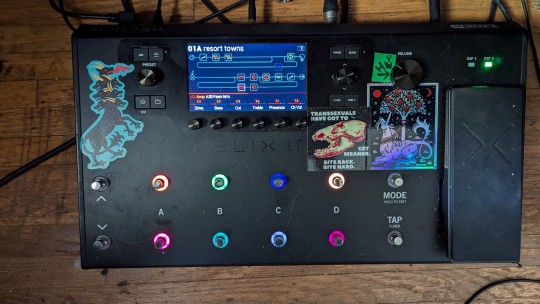
this is gonna seem like a lie based on what you're looking at here, but i'm really pretty simple with my setups - i am a set it and forget it kind of woman.
for rhythm parts, i am using a fawn vox ac30 (blue alnico) and a fender deluxe reverb (oxford) in tandem, generally being pushed by an earthquaker pillars and an xotic ep booster (bruises uses a klon, just depends on the kind of push i need). little bit of compression with the xotic sp compressor, then, as necessary for wetter parts: line 6 echo park, line 6 space chorus, a boss ce-1, a boss ac-2 and a fender vibratone (lol). in terms of helix-only effects, i'm using the line 6 heliosphere delay and hot springs reverb.
for LEADS however, we're all over the place. all kinds of shit. i generally run a higher gain amp, like a bogner shiva (uberkab t75) or a marshall jcm-800 (jensen p12q [grammatico amp]/marshall basketweave g12 m25). I was actually really pleased with how good the shiva is for lead work in our sad queer indie rock songs - this is an amp that like alice and chains and korn use and it really adds the right amount of twinkle and beautiful bummer to our songs about autism and queerness and millennial disillusionment and i just think that's such a funny juxtaposition. anyways.
for taurus, i'm using the bogner and running the xotic ep booster again, way huge red llama, dunlop mxr timmy, mxr phase 90, and auto-volume echo from the line 6 dl4. simple stuff.
for re-run, i'm using the jcm-800 and pushing it with a tube screamer when it gets huge. boss tr-2, boss dm-2 with adrian mod, tc electronic 2290, tape eater from the line 6 mm4, simple tube comp, and the line 6 feedbacker. i also have a looper set up so I can include some post-rock tremolo picked yumminess without it taking up all my focus. this is definitely my most complex rig in the helix, but even still - not too wild. like i said. set it and forget it.
so yeah! that's pretty much it for my guitars this time around. i'm gonna guess that we'll do mj's guitars next but who knows! life is a mystery and it is for living! see y'all soon.
~ elizabeth
#transgender#indie rock#trans artist#trans music#vancouver music#wearehouseguest#houseguest#houseguestband#alt rock#post rock#studio diary#updates#emo#pacific northwest emo#post hardcore#post punk#punk rock
3 notes
·
View notes
Text
Why Vox Amps Are Still a Studio Favorite in 2025

In the fast-paced world of music production, gear trends may come and go, but some names remain timeless. One such icon is Vox Amps. From the Beatles in the 1960s to modern indie rockers and session guitarists today, Vox has long been a trusted brand in both live and studio settings. Even in 2025, with digital amp modeling and software plugins dominating many home studios, Vox Amps continue to hold their place as a go-to choice for recording professionals.
But what makes Vox a perennial studio favorite? Let’s explore the unique features and timeless tone that keep Vox Amps relevant in today's music production landscape.
1. That Legendary Chime and Grit
Vox Amps are synonymous with a clean yet rich "British chime" that no other amp replicates quite the same way. The most iconic models, such as the Vox AC15 and Vox AC30, deliver a tone that is simultaneously clear and harmonically complex. Whether it’s the shimmering highs, the responsive mids, or the punchy lows, these amps shine across multiple genres—from classic rock and pop to blues and indie.
In the studio, this tonal versatility is gold. Engineers and producers love how well Vox Amps respond to different pickups and playing styles. Whether you're fingerpicking, strumming chords, or cranking up for a lead solo, the amp naturally enhances your dynamics without heavy EQ or post-processing.
2. Excellent Recording Compatibility
Another reason why Vox continues to dominate studios is how well their amps record. Microphones pick up Vox tones beautifully, often requiring minimal adjustment in the mix. A properly mic’d AC30 or AC15 delivers warm, balanced tones with sparkling presence—making it easier for producers to fit guitar tracks into dense arrangements.
Moreover, many modern Vox models now include line out, cab sim, or USB direct recording features, allowing hybrid analog/digital workflows. These additions ensure that Vox Amps remain relevant in DAW-driven environments while still offering the organic sound that plugins struggle to replicate authentically.
3. Adaptability with Pedals
Vox Amps are famously pedal-friendly. Their clean headroom and rich harmonic content make them excellent platforms for overdrives, fuzz, modulation effects, and delays. This is especially valuable in studio work, where layering multiple guitar textures is key to building depth in a mix.
Many studio guitarists and producers use Vox amps as a tonal base and shape their sound with stompboxes. Whether you're running a boutique fuzz or a digital delay, the amp faithfully translates the nuance of each effect.
4. Modern Enhancements Meet Vintage Charm
While vintage Vox models are still treasured, today’s Vox lineup includes modern features like:
Reactive attenuators for quiet recording
Built-in reverb and tremolo with analog warmth
Lightweight cabinets without compromising tone
Hybrid tube/digital technology (e.g., the Vox Cambridge series)
These additions allow for practical, flexible use in home studios without sacrificing the beloved Vox character.
5. A Legacy of Trust and Prestige
Let’s not forget the psychological edge: musicians and producers gravitate toward gear that has a proven legacy. The fact that Vox was used by legends like Brian May, The Edge, and Tom Petty lends a sense of authenticity and prestige. Owning and using a Vox amp in the studio not only sounds great—it feels right.
In 2025, where tone authenticity is valued more than ever in a saturated digital world, that analog credibility counts.
Final Thoughts
In an age when digital amp simulators are more powerful than ever, Vox Amps still stand tall in studios around the world. Their timeless tone, recording-friendly output, modern functionality, and rich history make them an indispensable part of serious music production. Whether you're an experienced producer or an up-and-coming guitarist, investing in a Vox amp means bringing a piece of rock history—and premium tone—into your studio. And in 2025, that’s a sound decision.
0 notes
Text
Pedalboard update
ignore the mess, my cables are as well managed as the rest of my life
This isn't really the setup I'm planning, but it's a mini board so I can change things as I go. Considering getting a couple new pedals, like an EQ and Tremolo, but for now my kit's good enough. Hell, a reverb pedal would be sick and definitely on the wishlist
But for now I gotta remove the old velcro, apply new velcro to both my pedals and the board, line everything up, etc. etc.
I'll definitely browse for unique pedals, a massive organized pedalboard would be a fun project later on, but only really having space for 4 full sized pedals on this board kinda limits the amount of effects I can glue together
(Right to Left) Octave, Tube Screamer, Fuzz + Octave, Delay
(Not Pictured: Chorus Pedal)

#pedalboard#guitar#bassist#musician#Ashe updates AM#Yes the pedalboard has a name#it's short for Anarchist's Minimachine
1 note
·
View note
Text
Brown Sound in a Box
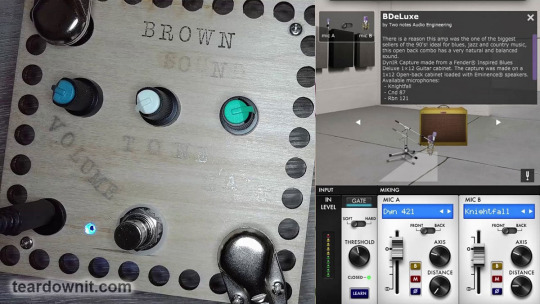
He invented the superstrat, an electric guitar for shredding, a masterful style he pioneered. Of course, it's Eddie Van Halen, one of the world's greatest guitarists. Brown Sound is his signature sound, and we will try to recreate it today.
It all started in California in the first half of the twentieth century. Jazz developed rapidly. The musicians hunted for increasingly complex chords and incredible improvisations.
The usual banjo and mandolin no longer satisfied performing needs, and more and more jazz musicians became interested in the Spanish guitar. It has as many as six strings, at least 19 frets, and quart tuning, setting the mood for serious performance.
But the guitar turned out to be too quiet compared to wind instruments and pianos. Therefore, luthiers began to assemble jazzboxes with a body width of 16 to 19 inches—real mammoths! Pictured is an 18-inch Gibson Super 400.

Jazzboxes had an arched top body, similar to a cello, with f-holes instead of the traditional round ones for guitars. Jazzmen installed thick strings on them, 12 or even 13-gauge. The standard scale length was 25.5 inches, like the future Fender Stratocaster.
In 1921, Gibson began installing truss rods in the necks to withstand such high tension on steel strings. Among other things, this made it possible to create a low string height above the frets and subsequently create thin, fast necks.
Thanks to the truss rod, electric guitar virtuosos were able to improve. Especially since Gibson began producing instruments with a shorter scale of 24 ¾ inches, which is easier to bend. Then, guitars received an electromagnetic pickup and a tube amplifier, and guitarists wanted their sound to be even more loud and overloaded.
The hollow guitar body, critical in the pre-amplification era, became a nuisance: it was susceptible to microphone proximity effects and self-oscillation.
The hollow body also nearly killed sustain, as its essence was to transmit the strings' vibrational energy to the air. As a result, the sound is louder and brighter, but at the same time, it fades faster.

The first experiment in creating an electric guitar without a resonator body involved a lap steel guitar played with a slide. Finally, in 1950, Leo Fender created the Broadcaster, the first true, commercially successful solid-body electric guitar, which soon evolved into our beloved Telecaster.
While Gibson always created guitars as art pieces, Fender instruments were originally conceived as DIY kits. When the frets wear out, you can simply buy a new neck and replace it by removing four screws. There is no need to take your guitar to a luthier and wait for the repair, having no instrument on hand and thus being left with no income if you are a professional musician.
It is worth noting that the Broadcaster's neck had a serious technical flaw—the absence of an anchor. The Telecaster has this drawback eliminated. Vintage Fender guitars require removing the neck to tighten or loosen the truss rod. In contrast, more modern guitars have an Allen key screw in the base of the headstock to adjust the truss rod.
In general, Leo Fender's guitar parts were designed to be removable and attached with screws. This meant that the instrument could be purchased as a modular kit. One can put a humbucker instead of a single-coil and a Floyd Rose instead of a Fender tremolo machine with six self-tappers.

This is exactly what Eddie Van Halen did when creating his Frankenstrat. After all, he was a talented musician, artist, and craftsman. And he came up with the first superstrat in history, a guitar for the ultimate rock and metal.
The Superstrat badly needed super distortion, and we're not talking about the DiMarzio pickup with the same name. Eddie Van Halen's secret "brown sound" resulted from a rather complex sequence of electronic audio signal conversions, which is no longer a secret today.
Happy concertgoers and inspired TV viewers who followed Eddie's every move with bated breath saw a full stack of Marshalls with a Plexi head amp behind him. It was an excellent device, but many people had it.
Van Halen's secret recipe consisted of several ingredients. First, an MXR equalizer was hooked between the guitar and the amp input. It allowed Eddie to fine-tune the gain structure so that some frequency bands were boosted to hard clipping while others passed through the amp relatively unaffected.
Secondly, Variac's variable transformer connected the amplifier to a 120-volt electrical grid. It was powered by a voltage of 90 volts, 75 percent of the required. The tube cathodes were cooler, and the anode voltage was lower than during regular operation of the amplifier. This had a dramatic effect on the nature of the overload.
Thirdly, it was not the cabinets connected to the amplifier's output but the dummy load. This was not a modern reactive electronic load like the Torpedo Captor X, which simulates the impedance of real speakers. It was just a powerful tapped resistor providing the audio with the required amplitude.
Next, the signal went to the pedalboard with the flanger, phaser, and tape delay. From there, it goes to the MOSFET power amplifier H&H V800 and only then to the cabinets. Let's say Eddie implemented an effects loop, which his Marshall Plexi did not have.
Fourth, the cabinets were loaded with a specific combination of different speakers, which Eddie changed from time to time.

Van Halen subsequently moved on to use the Soldano SLO 100. Then he developed his signature 5150 amp with Peavey and the guitar Wolfgang, named after his son. Later, in collaboration with Fender, he created the EVH brand.

I had the EVH 5150 III lunchbox, which is just a great amp. Interestingly enough, the best room sound came not from the Celestion Greenback speaker but from the nameless black 12-inch speaker from the first-generation Fender Mustang II digital combo amp. I got the body and the speaker from this amp without electronics, and they became my favorite closed-back cabinet.

I also had a toy-like EVH 5150 III microstack. If we could add an output jack to an external cabinet, we'd feel some Van Halen vibes, but I didn't like the sound itself.
Unlike the Orange Crush Mini, this EVH product is more of a gimmick than a guitar amp. However, once I came across a YouTube video where this microstack sounded pretty good in an empty concrete room. Which once again proves the impact of the environment on the sound of an electric guitar.
As you can already tell, I like Eddie Van Halen's guitar tone. I don’t so much strive to recreate it as I look for inspiration. That's why building today's pedal is especially interesting for me.
In this diagram, we do not see the usual operational amplifiers. Instead, five JFETs are used here: four in two mu stages and one in a conventional common-source stage. The sixth JFET is responsible for the Millennium bypass. It simply turns off the LED when the gate of the transistor is connected to the ground through the volume control and lights the LED up when it's not.
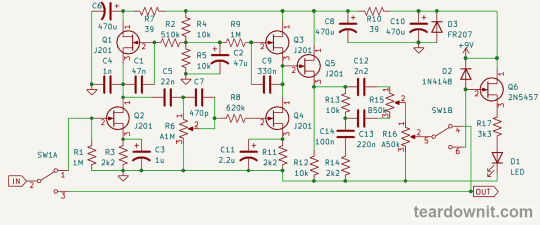
A mu stage is a cascade with an active load. In a simplified way, transistors Q1 and Q3 operation can be represented as current stabilizers. After all, a JFET is a current stabilizer controlled by gate voltage.
Resistors R4 and R5 form a virtual ground—a voltage source equal to half the supply voltage. It is AC grounded by capacitor C2.
We also see power filters. The C8R10C10 U-filter filters the power supply for the entire pedal, and the R7C6—for the first mu stage.
The active load transistor gates Q1 and Q3 are connected to virtual ground through resistors with significant resistances (R2 and R9). Capacitors C1 and C9 are connected between the sources and gates. Therefore, our active loads are not just current stabilizers but also active filters.
R6 is a gain control, and C7 is a treble bypass capacitor. The peculiarities of human hearing are such that when the volume is reduced, the sound seems duller, which is why the volume and gain controls are equipped with such frequency compensation in many devices.
Q5 serves as the output buffer, and R15 is the tone control. In the up position, the pedal outputs more high frequencies, and in the lower position, more low ones.
This is what this distortion sounds like with a Squier Bullet Mustang HH guitar and an Orange Micro Terror amp. I hear hints of the EVH sound in it. Still, it's more reminiscent of the Soldano SLO100 (which Eddie also used until the 5150 was developed).
Despite my stages and good power filters, the distortion is hairy. It must be put in a shielded housing for it to work typically. But even then, this circuit retains a fairly significant noise level.
However, these imperfections do not spoil the sound but make it more alive. If you want no noise, then an EVH 5150 amp is waiting for you to buy it. Fender engineers put a lot of effort into shielding and routing the boards of these high-gain amplifiers so that they are almost completely noise-free.
0 notes
Text
Effects unit

A guitar pedalboard allows a performer to create a ready-to-use chain of multiple pedals to achieve certain types of sounds. Signal chain order: tuner, compressor, octave generator, wah-wah pedal, overdrive, distortion, fuzz, EQ and tremolo.
""An effects unit, effects processor, or effects pedal is an electronic device that alters the sound of a musical instrumentor other audio source through audio signal processing. Common effects include distortion/overdrive, often used with electric guitar in electric blues and rock music; dynamic effects such as volume pedals and compressors, which affect loudness; filters such as wah-wah pedals and graphic equalizers, which modify frequency ranges; modulation effects, such as chorus, flangers and phasers; pitcheffects such as pitch shifters; and time effects, such as reverb and delay, which create echoing sounds and emulate the sound of different spaces. Most modern effects use solid-state electronics or digital signal processors. Some effects, particularly older ones such as Leslie speakers and spring reverbs, use mechanical components or vacuum tubes. Effects are often used as stompboxes, typically placed on the floor and controlled with footswitches. They may also be built into guitar amplifiers, instruments (such as the Hammond B-3 organ), tabletop units designed for DJs and record producers, and rackmounts, and are widely used as audio plug-ins in such common formats as VST, AAX, and AU. ..."
W - Effects unit (Audio)
0 notes
Text
Tube amp trio, 10 years on
Yeah I'm not dead, I just bought a house and took a few years off from making music-stuff so I could focus on house stuff
Anyway
Last year I spent... countless hours designing some guitar pedals that I still haven't built yet... but in the process, learned a lot of new quirks of vacuum tube behavior. And while designing & prototyping those pedals (which I will finish the next time that I get the urge to solder), I realized that some of those weird quirks explained why my amps never sounded quite the way I wanted to sound.
For example:
Did you know that the gain factor of a triode changes depending on the impedance it has to drive? And that's in addition to whatever signal loss you're going to be seeing when you consider its own somewhat high output impedance? For example, a 12AX7 common-cathode gain stage loaded with 50k only generates a little more than half as much gain as it would with a 500k load, and you're still looking at a 38k anode impedance running into that load. So it produces a smaller amplified signal and then attenuates it more. Consider the final preamp triode in the classic Fender AB763 circuit: at a glance it looks like its output just runs through some mixing resistors on its way to the phase splitter, but then you spot that pesky Tremolo intensity pot hiding further down in the schematic. Oh, and those mixing resistors and the other channel's anode resistors all form a big complicated network of AC paths to ground, acting in parallel with the more obvious parts of that load... and right before that triode is the big signal-attenuating reverb filter. So that last stage isn't spitting out a great big signal and slamming the phase splitter like I thought it was in 2014: it's taking a very manageable signal, spitting out a small signal, and then throwing even more away on its way to the splitter. No wonder my Fender-inspired build always seemed too dirty and never did the spanky-clean funky stuff properly.
I rebuilt the entire pre-amp in the Fender-y amp and now it's just dandy. Added some more options too, so now it convincingly covers the entire Fender clean spectrum, certain Dumble settings, and the Mesa Mk1, Lonestar, and Blue Angel pre-amp circuits. Very flexible. Lots of mini toggles.
Another example:
I was - and remain - power tube agnostic when it comes to BS like "American power tubes sound glassier and cleaner than British power tubes!" No they don't. That's how the preamps and speakers are voiced. It has nothing to do with the power tubes.
Buuut
That "they're all the same, just different power levels" attitude made me miss that different models of tube have different levels of input headroom.
For example, it turns out that a 6v6 starts to distort at about the same level of input signal as an EL34 does, which means that the power tube distortion start at an appropriate level for my Fender and Marshall styled amps when they're cranked up loud, but an EL84 offers much less clean input room before it hits its maximum output and distorts. So the Vox styled amp, with the 6v6 output section I gave it back when there were no trustworthy manufacturers for EL84s, was completely incapable of pushing its output tubes into the kind of saturation demanded by Queen. So I ended up rewiring the power transformer to nerf the voltage, replaced the output transformer to an EL84-friendly value, and popped in new sockets to use the right tubes. Luckily JJ makes good EL84 tubes now and so the reliability problems are solved and the amp sounds right again.
Okay, one more example that has nothing to do with the tubes:
When I chose my speakers for these amps I based my choices on what kind of aftermarket speakers people were putting into their amps at the time, and alnico blues were extremely popular. So sure, why not? Jensen alnicos it was. Fast forward ten years and I've realized: that's not what came in Fender amps in the 60s, and that's part of why my Fender-ish never sounds properly Fender-ish. Bought me a proper cheap ceramic Jensen, wired it up in the speaker cabinet, and voila: the crisp dare-I-say "ice-picky" trebles that were always missing were there. And to think, this wouldn't have been a problem if I had originally gone with the same "we chose this one because it was cheap" speaker the things shipped with half a century ago.
. . . . .
Yeah it turns out if you want to make something that sounds like the amps you've been listening to from the last 60 years of recordings, the best way to do that is to pay careful attention to what was inside those amps instead of trying to reinvent the wheel.
0 notes
Text
The Best Vox Amps for Home Practice and Studio Recording

When it comes to choosing an amplifier for home practice or studio recording, musicians often look for a balance between sound quality, versatility, and size. Vox, one of the most iconic names in the world of guitar amplifiers, offers a range of amps that cater to both beginners and seasoned players looking for a great tone in a compact package. Known for their signature chimey, bright sound and rich tonal palette, Vox amps have earned their place as favorites for home and studio environments alike.
In this article, we will explore some of the best Vox amps for home practice and studio recording, focusing on their key features, sound quality, and versatility.
1. Vox AC15C1
The Vox AC15C1 is a classic choice for those who want legendary Vox tone in a smaller, more manageable package. With 15 watts of tube-driven power, the AC15C1 strikes the perfect balance between volume and portability, making it an excellent choice for both home practice and recording sessions. Its smaller size doesn’t compromise on tone – it still delivers the same sparkling cleans and gritty overdrive that the larger AC30 is known for.
The amp features a 12" Celestion Greenback speaker, which is renowned for its warm midrange and controlled highs, providing excellent sound reproduction. The AC15C1 comes with two channels: Normal and Top Boost. The Top Boost channel allows players to shape their tone with treble and bass controls, while the Normal channel offers a more straightforward sound for those who prefer a classic, uncolored tone.
For studio recording, the AC15C1 shines because of its ability to produce rich harmonic overtones at lower volumes. The built-in spring reverb and tremolo effects give you additional tonal options, making it a versatile choice for a wide range of musical styles.
2. Vox AC10C1
For players who need something even more compact and quieter than the AC15C1, the Vox AC10C1 is an excellent alternative. This 10-watt tube amp offers the signature Vox sound in a smaller, lighter package, making it perfect for bedroom practice and home studios where high volume levels might be an issue.
Despite its smaller size, the AC10C1 delivers a big sound with a 10" Celestion speaker, providing warm lows and bright highs that cut through the mix. The amp features simple controls – gain, bass, treble, reverb, and master volume – which make it easy to dial in a variety of tones, from clean and chimey to rich overdrive.
The AC10C1 is particularly well-suited for recording, as it delivers warm, tube-driven tones without needing to be cranked to high volumes. This makes it ideal for capturing high-quality sound in a home studio environment, where volume restrictions might be a concern.
3. Vox MV50 Series
The Vox MV50 series amps are a modern innovation in amplifier design, offering tube-like sound in a highly portable, lightweight package. Weighing in at just over a pound, the MV50 amps are perfect for guitarists who need a powerful amp head for practice and recording without the bulk of traditional tube amps.
The MV50 series features three main models: MV50 Clean, MV50 Rock, and MV50 AC. Each model is designed to emulate a specific tonal character, from clean, Fender-like tones to the classic Vox sound found in the MV50 AC. These amps use Vox’s Nutube technology, which emulates the sound and feel of traditional vacuum tubes while being more energy-efficient and compact.
For studio recording, the MV50 series is especially appealing because of its built-in EQ switches and line-out capabilities, allowing you to plug directly into a recording interface without needing a speaker cabinet. This direct output feature makes it easy to achieve high-quality recordings at home without the need for external microphones or complex setups.
4. Vox VT40X
The Vox VT40X is part of Vox’s Valvetronix series, which combines analog circuitry with digital modeling technology to offer a wide range of amp models and effects. This 40-watt amp is perfect for home practice and studio recording, offering a ton of versatility in a relatively compact design.
The VT40X features a 10" speaker and a selection of 11 amp models, including clean, crunch, and high-gain tones. It also offers a variety of built-in effects, including delay, reverb, chorus, and more, making it easy to experiment with different sounds without the need for external pedals. The amp’s USB connectivity allows for direct recording to your computer, making it a convenient choice for home studios.
One of the key advantages of the VT40X is its Tone Room editor software, which lets you customize and save your own amp models and effects. This level of flexibility makes it a powerful tool for players looking to record different styles of music in their home studio.
5. Vox Pathfinder 10
For beginners or players on a budget, the Vox Pathfinder 10 is an affordable option that still delivers that classic Vox sound. This 10-watt solid-state amp is compact and easy to use, making it ideal for home practice. While it doesn’t have the tube-driven warmth of some of the other models mentioned, it still provides a surprising amount of tonal variety for its size and price.
With simple controls and a headphone output for silent practice, the Pathfinder 10 is a great choice for players who want a small amp for practice without sacrificing too much on tone. Its portability and low cost make it an accessible option for those just starting out or those who need a quick and easy practice amp.
Conclusion
Vox offers a range of amps that cater to different needs, from compact practice amps to versatile models perfect for home studio recording. Whether you’re looking for classic tube warmth in the AC15C1, modern innovation in the MV50 series, or affordable options like the Pathfinder 10, Vox amps deliver high-quality sound and flexibility. Choosing the right Vox amp depends on your specific needs, but rest assured, any of these models will enhance your practice and recording sessions with that unmistakable Vox tone.
0 notes
Text

I think it's finished for now. I picked up a Caline tremolo pedal on clearance from Reverb for under $40 and swapped out the very inexpensive Dolamo compressor I was using for a much better one. I also found a dual latching footswitch for under $20 to control the amp reverb and effects circuit. I still want to get a 10-band EQ and a vibrato (it's the only basic "effect" that I'm missing), and then maybe play around with some different reverb and delay pedals sometime down the line. It'd be cool to get a delay that can do the reverse tape echo thing. But for now, it's done.
It's all budget stuff with the exception of the vintage CryBaby and the bog standard TS-9 Tube Screamer but man I'm just having a lot of fun. So many guitar players, especially the guys you run into online, are all gear snobs of the worst sort who earnestly believe the only way to sound good is by spending $1000 on a Klon, fuck those guys.
7 notes
·
View notes
Text
The Top 10 Audio Plugins Every Music Producer Should Know About
If you’re a music producer, audio plugins are essential tools in your arsenal. They help shape your sound, mix your tracks, and add creative effects to your music. But with so many options out there, it can be hard to know which ones are worth your time. In this blog, we’ll go over the top 10 audio plugins that every music producer should know about.
1. Equalizer (EQ) Plugins
EQ plugins are a must-have for any producer. They allow you to adjust the balance of different frequencies in your mix. Whether you’re cutting out unwanted noise or boosting certain tones, an EQ plugin gives you control over your sound.

2. Compressor Plugins
Compressors help manage the dynamic range of your tracks, making quiet sounds louder and loud sounds quieter. This is crucial for creating a balanced mix where every element can be heard clearly. Compressors are especially useful for vocals and drums.
3. Reverb Plugins
Reverb plugins add space and depth to your tracks by simulating the sound of different environments, like a small room or a large hall. Adding reverb can make your music sound more natural and polished, helping elements sit better in the mix.
4. Delay Plugins
Delay plugins repeat your sound after a short period, creating an echo effect. You can use delay to add rhythm, texture, or atmosphere to your tracks. It’s a versatile tool that can be used creatively in many different genres.
5. Saturation Plugins
Saturation plugins add warmth and color to your sound by emulating the effect of analog tape or tube equipment. They can make your tracks sound fuller and richer, which is great for adding character to digital recordings.
6. Limiter Plugins
Limiters are used to control the peak levels of your tracks, preventing distortion and ensuring that your mix doesn’t clip. They are often used in the mastering process to make sure your final mix sounds loud and clear without any unwanted peaks.
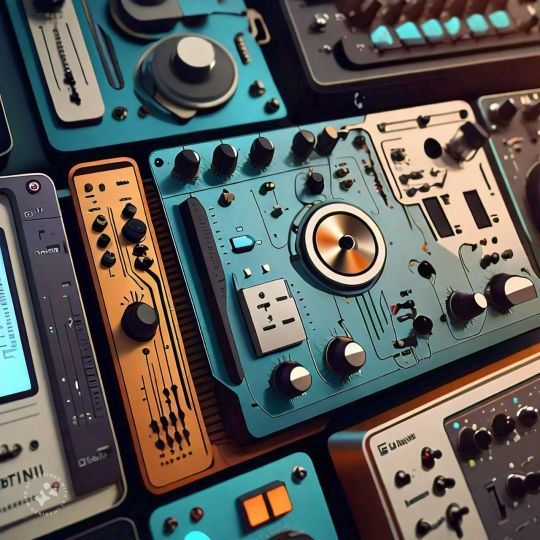
7. Chorus Plugins
Chorus plugins create a thicker, more textured sound by duplicating your audio and slightly detuning it. This effect is often used on guitars, vocals, and synths to add width and richness to the sound.
8. Pitch Correction Plugins
Pitch correction plugins help you correct or manipulate the pitch of your vocals or instruments. They’re useful for fixing off-key notes and can also be used creatively to achieve that popular pitch-shifted vocal effect.
9. Noise Gate Plugins
Noise gate plugins reduce unwanted background noise by cutting out audio below a certain threshold. They’re particularly useful for cleaning up recordings of vocals, guitars, or drums, where you might have unwanted hums or hisses.
10. Modulation Plugins
Modulation plugins add movement to your sound by altering certain parameters over time. This can include effects like flangers, phasers, and tremolos. Modulation can make your tracks more dynamic and interesting by adding subtle or dramatic changes.
These 10 audio plugins are essential tools that every music producer should be familiar with. Many reputable shops like VIP PRO AUDIO in Brooklyn provide guidance on audio gears to ensure musicians get valuable information whether you’re mixing, mastering, or just adding creative effects, these plugins will help you take your music to the next level. By understanding how to use them effectively, you’ll be able to produce tracks that sound polished, professional, and uniquely yours.
1 note
·
View note
Text
Vox Classic Vintage Red AC Custom Series Amps
The Vox Classic Vintage Red AC Custom Series continues its tradition of offering limited edition colorways with its latest release, featuring the AC10C1, AC15C1, and AC30C2 amps in a striking red finish. This bold color is complemented by black and gold diamond fret cloth and a vintage rectangular Vox badge, adding a touch of retro charm to these iconic amps. Classic Vintage Red AC Custom…

View On WordPress
#12AX7#AC Custom Series Amps#AC10C1#AC15#AC30C2#amp#Brian May#British#Celestion#Celestion VX10#Classic Vintage Red AC Custom Series#Classic Vintage Red Range#COmbo#EL84#G12M Greenback#Queen#reverb#special editions#Tremolo#tube#valve#Vox
0 notes
Text
Pedal Electric Guitar
A pedal electric guitar, commonly referred to as an electric guitar pedal, is a crucial component in the arsenal of guitarists across various musical genres. These pedals are compact electronic devices designed to alter or enhance the sound of an electric guitar by applying various effects and modifications to the instrument's signal chain.
Electric guitar pedals come in a wide variety of types, each offering distinct sonic capabilities:
Distortion and Overdrive Pedals: These pedals add varying degrees of saturation, crunch, and sustain to the guitar signal, mimicking the sound of pushed tube amplifiers. They are fundamental for achieving classic rock, blues, and metal tones.
Modulation Pedals: Modulation effects include chorus, phaser, flanger, and tremolo pedals, which manipulate the guitar signal to create dynamic movement and spatial effects. These pedals are essential for adding depth and texture to guitar solos and rhythm parts.
Delay and Reverb Pedals: Delay pedals repeat and echo the guitar signal with varying time intervals, while reverb pedals simulate the acoustics of different environments, adding space and ambiance to the guitar sound.
Compression Pedals: Compression pedals even out the dynamic range of the guitar signal, enhancing sustain and smoothing out inconsistencies in playing dynamics.
0 notes
Text
Let's Build the Gibson GA1-RVT.....A 3-Tube Amp with Reverb & Tremolo, Part 1 of 3 - YouTube https://www.youtube.com/watch?v=t4gdjZx9fzc
youtube
0 notes
Text
1964 Ampeg Super Echo Twin ET-2-B
This is a true stereo amp with 2 different amps, reverb and tremolo. 2 channels with separate mono inputs and a stereo input. 4 7591A tubes, 2 per amp for 15 watts/side 30 in mono. 2 original Jensen C12Qs. Lots of tonal setups available.
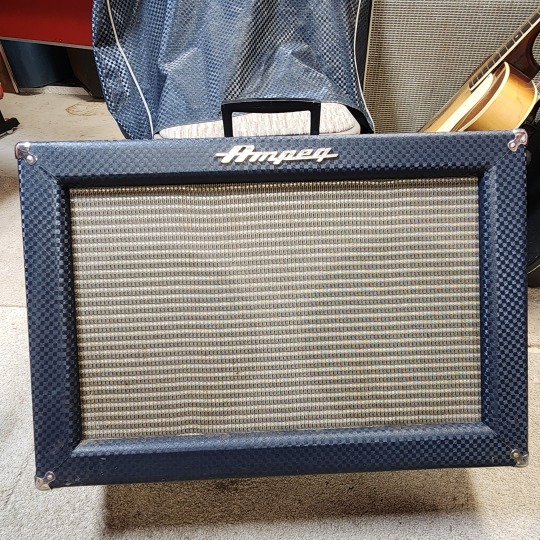
youtube
youtube
#detroit#studio#rental#studio rental#backline#vintage guitar amp#guitar amp#vintage amplifier#vintage guitar amplifier#vintage amp#Youtube#Ampeg#Super Echo#ET-2-B#Ampeg ET-2-B
0 notes